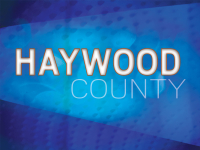Another view on childhood poverty
To the Editor:
In last week’s edition of The Smoky Mountain News the editor gave us his thoughts of the bill in Congress to address childhood poverty by giving middle-income and low-income families $300 or $250 per child per month (until the child reaches 18 years of age in the original plan).
Since then Congress passed the bill with a modified plan that will increase the child tax credit from what it is currently but the plan will terminate after one year. The editor is a supporter of the increased child tax credit plan and the continuation of it indefinitely.
I disagree with his position on the overall effects this plan to address childhood poverty. I am not an expert on this subject but there are many groups and organizations that do study it full time and whose opinions and positions we should embrace. One of them is the American Enterprise Institute (AEI), whose poverty studies group produces a free biweekly email newsletter on the subject with not only their conclusions but also those of other experts in the field of poverty in this country. I encourage SMN readers to subscribe to that newsletter. It will give you a new appreciation for the complexities of poverty and the unintended consequences of anti-poverty government programs. They also occasionally include articles about attempts to measure poverty more accurately called Supplemental Poverty Measure and Consumption Poverty.
SMN Editor Scott McLeod provides us the statistics on poverty which is strictly based on a measurement of the household income. He questions how a family of four can “make it work” on $504 per week which is the poverty threshold. He fails to mention what’s called the poverty safety net of existing government programs that effectively raises the family “income” substantially. These include: EITC (Earned Income Tax Credits), SNAP for food, TANF for temporary cash assistance, HUD housing assistance programs, Pell Grants to help pay for college costs, Child Nutrition pays for school breakfast and lunch, LIHEAP – Low Income Home Energy Assistance Program, and 6 others for a total of 13 programs plus Medicaid. The obvious point is that the real income of families utilizing these programs is much higher than their income from their employment. Plus, there are state programs and local charities. Taxpayers can take some comfort in knowing that the 13 federal programs plus Medicaid cost approximately $827 billion in fiscal year 2020 per the federalsafetynet.com website. Our commitment to addressing poverty through these federal programs is substantial and a positive reflection of our compassion as a society for our neighbors in need.
In the column we also learned that 93 percent of U.S. children will receive a benefit under the plan. Wow. So we have a federal government that is $XX trillions in debt and the plan is to add to it by giving cash to middle-income families even though many of them may disagree with unnecessary government spending? And just who would receive the cash? The parents of course. Would they use it for the children? Is it possible that the cash payments to families will result in some parents choosing to stop working or work less?
We have a substantial safety net now for low-income families. And it has been working. U.S. census data shows that before the pandemic the poverty rate was the lowest in history, down from 14.8 percent in 2014 to 10.5 percent in 2019. We don’t need payments to families from the government based on the number of children they have. Instead, our federal government needs to make revisions in the tax code to decrease marginal effective tax rates for low-income workers, reduce tax rates for families, and eliminate marriage penalties in the tax code. At the local and state level our efforts must be focused on employing our able-bodied (and able-minded) neighbors who currently are in poverty. Over the past 60 years we have learned (those who study poverty tell us) the most effective way to decrease child poverty is through jobs and employment of their parents, not government cash programs.
John Johnson
Lake Junaluska





